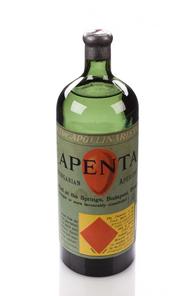





Bag of Kamusowha, Uganda, collected 1919
Kamusowha is the name of a plant whose roots and leaves are pounded for juice by the indigenous people of Ankole, West Uganda. The juice is poured into the nose to treat headaches or inserted as an enema into organs affected by syphilis, a sexually transmitted infection.
The bag was collected by the Mackie Ethnological Expedition to Central Africa in 1919-1920. The expedition aimed to learn about the social and religious customs of the area and was led by John Roscoe, whose name is written on to the side of the bag. It is typical of a large number of such specimens which were collected from local traditional healers in Africa, packaged up and sent to Britain.
Details
- Category:
- Materia Medica & Pharmacology
- Collection:
- Sir Henry Wellcome's Museum Collection
- Object Number:
- A666861
- Materials:
- bag, linen
- type:
- bag




